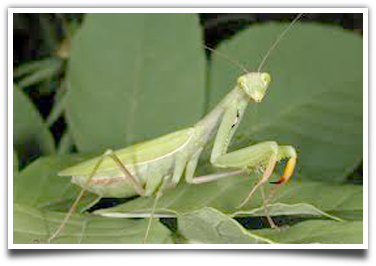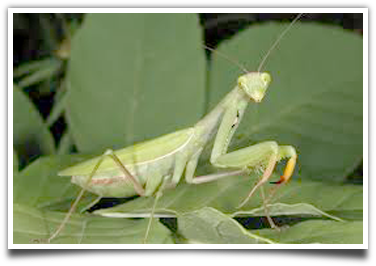Common Praying Mantis Injuries
The most common injury of praying mantises is damage to their limbs resulted from falls. If a praying mantis is suffering from this injury, there will be a noticeable deformity in the position of its legs or some bleeding.
The mantis can be aided by using fingernail hardener to coat the affected spot. Suffering from dehydration may cause the insect to become shriveled or lethargic, or to shed. In this case, the best thing that you can do for the injured praying mantis is to seek the expert advice of an exotic veterinarian and keep on protecting the environment of the insect.
Caring for an injured mantis requires you to house it properly to make sure that the insect lives in the best habitat. The mantis also needs to be provided with a diet that is rich in protein. Crickets, fruit flies, cockroaches and mealworms are all beneficial meal options for praying mantises. However, see to it that the insect you feed is not larger than half the head size of the mantis.
Eliminate the insect if it is not eaten by the praying mantis. Crickets have the tendency to harm young animals and this could worsen the injury. The mantis could even die in case it is unable to defend itself from the predator.
Taking Care of Praying Mantis There are actually quite a number of people who have praying mantises as their pets. Some of these people are insect collectors while some are actually just fascinated about these insects. But whether you are just doing the collecting for fun or you are doing this for research, it is important to know essential praying mantis facts especially on how to take care of them. The first thing that you need to know when taking care of a praying mantis More... Hatching a Praying Mantis In order to start hatching a praying mantis, put the egg case into a terrarium, in case you are planning to keep them as pets. A terrarium can take the form of a fish bowl, a jam jar or any other container, as long as there is a small branch of plant left inside. Install mesh on the top to prevent the nymphs from getting away but allows for both air flow and food delivery. The egg case should be More... Praying Mantis Facts All over the world, there are approximately one thousand and eight hundred known species of insects grouped from the genus Mantis. Because of the anatomical uniqueness of the mantis’ striking and very defined front legs that are bent at a particular angle resembling a praying position, this genu is most commonly referred as the praying mantis. The praying mantis comes from an entire, bigger group of mantids, from the class Insecta and from the phylum Anthropoda. Most praying mantis facts More... Praying Mantis Facts about their Eggs Just like most other insect species, the praying mantises also reproduce through hatching eggs. Many farmers and gardeners take note of praying mantis facts about their eggs especially if they plan on using these mantises as a natural form of pest control. When praying mantises release eggs, the eggs are enclosed in a case and farmers call this a mantis egg case. Egg cases of praying mantises can be sold to other farmers and gardeners. When the praying mantis lays More... Benefits of Praying Mantis Facts on Gardeners There are a lot of gardeners who need to be educated with praying mantis facts so that they will know what these insects can do to the garden and to the environment. If you have a garden in your backyard and you see a couple of praying mantises lurking, most of you might get rid of it because they look dangerous or the kids may get scared. But mantises are actually advantageous to the garden. One of the key facts More...
|




